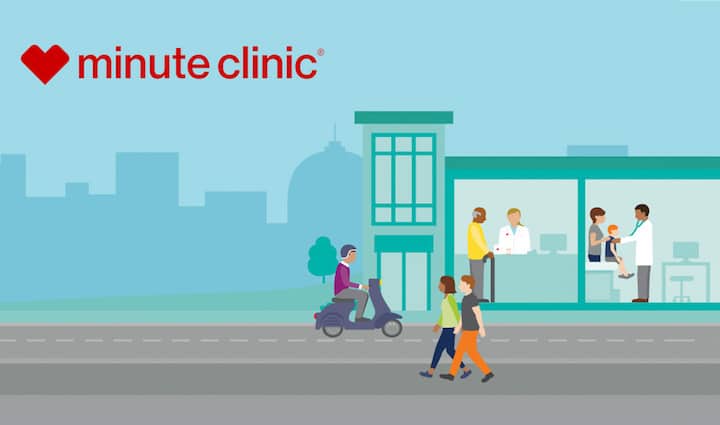If you deal with chronic pain, you likely need a group of physicians to attain an ideal outcome. Here's what to anticipate from a pain specialty practice or center. So you have actually chosen it's time to make a visit with a pain doctor, or at a discomfort clinic. Here's what you need to know prior to arranging your visitand what to anticipate once you're there.
" Pain physicians originate from several instructional backgrounds," says Dmitry M. Arbuck, MD, president and medical director of the Indiana Polyclinic in Indianapolis, a discomfort management clinic. Dr. Arbuck is licensed by the American Academy of Discomfort Management and the American Board of Psychiatry and Neurology. "Any doctor from any specialtyfor instance, emergency medicine, family medicine, neurologymay be a discomfort doctor." The discomfort physician you see will depend on your symptoms, medical diagnosis, and needs.
Arbuck discusses. "The doctors within a discomfort management center or practice might focus on rheumatology, orthopedics, gastroenterology, psychiatry," or other areas, for example. Pain physicians have actually earned the title of MD (Physician of Medicine) or DO (Medical Professional of Osteopathic Medicine). Some pain doctors are fellowship-trained, indicating they received post-residency training in this sub-specialty.
( Read more about interventional discomfort methods.) Pain physicians who have satisfied certain qualificationsincluding completing a residency or fellowship and passing a composed examare thought about to be Learn here board-certified. Numerous pain medical professionals are dual-board accredited in, for example, anesthesiology and palliative medicine. Nevertheless, not all discomfort doctors are board-certified or have formal training in pain medication, but that doesn't mean you shouldn't consult them, states Dr.
How How To Get Into A Pain Management Clinic When Pregnant can Save You Time, Stress, and Money.
Dr. Arbuck recommends that individuals looking for assistance for persistent discomfort see doctors at a center or a group practice because "no one expert can really treat discomfort alone." He discusses, "You do not desire to pick a specific type of doctor, necessarily, but an excellent medical professional in an excellent practice."" Discomfort practices need to be multi-specialty, with a great track record for using more than one technique and the ability to resolve more than one problem," he Alcohol Rehab Center advises. who are the doctors at eureka pain clinic.
As Dr. Arbuck discusses, "If you have one physician or specialty that's more vital than the others," the therapy that specialty favors will be stressed, and "other treatments might be overlooked." This model can be problematic since, as he explains: "One pain client may require more interventions, while another may require a more psychological technique." And because pain clients also benefit from numerous therapies, they "require to have access to physicians who can refer them to other specialists as well as deal with them." Another advantage of a multi-specialty pain practice or clinic is that it helps with regular multi-specialty case conferences, in which all the physicians satisfy to discuss patient cases.
Arbuck points out. Believe of it like a board meetingthe more that members with different backgrounds work together about a specific difficulty, the more most likely they are to resolve that particular issue. At a discomfort clinic, you may also fulfill with physical therapists (OTs), physiotherapists (PTs), certified physician's assistants (PA-C), nurse professionals (NPs), certified acupuncturists (LAc), chiropractic specialists (DC), and exercise physiologists.
The latter are typically social workers, with titles such as certified medical social worker (LCSW). Dr. Arbuck views effective discomfort medication as a spectrum of services, with psychological treatment on one end and interventional pain management on the other. In in between, patients have the ability to get a mix of medicinal and rehabilitative services from various doctors and other healthcare companies.
All About How Much Do Employees Make At A Pain Management Clinic

Initial visits may include several of the following: a physical test, interview about your medical history, pain evaluation, and diagnostic tests or imaging (such as x-rays). In addition, "An excellent multi-specialty center will pay equivalent attention to medical, psychiatric, surgical, family, addiction, and social history. That's the only way to assess patients thoroughly," Dr.
At the Indiana Polyclinic, for instance, patients have the opportunity to seek advice from experts from 4 primary areas: This might be an internist, neurologist, household specialist, or perhaps a rheumatologist. This medical professional normally has a large understanding of a broad medical specialty. This medical professional is most likely to be from a field that where interventions are frequently used to read more deal with discomfort, such as anesthesiology.
This supplier will be somebody who specializes in the function of the body, such as a physical medicine and rehab (PM&R) medical professional, physiotherapist, occupational therapist, or chiropractic physician. Depending on the client, she or he might also see a psychiatrist, psychologist, and/or psychotherapist. The client's medical care physician may collaborate care.
Arbuck. "Narcotics are simply one tool out of lots of, and one tool can not work at all times." Additionally, he keeps in mind, "discomfort clinics are not simply places for injections, nor is pain management almost psychology. The objective is to come to appointments, and follow through with rehab programs. Pain management is a dedication.
The smart Trick of What I Need For Open A Pain Clinic Office In Ms That Nobody is Talking About
Arbuck explains. Treatment can be pricey and because of that, patients and medical professional's offices often require to combat for medications, consultations, and tests, however this challenge happens beyond discomfort centers also. Clients ought to also understand that anytime managed compounds (such as opioids) are associated with a treatment strategy, the medical professional is going to demand drug screenings and Client Arrangement types concerning rules to abide by for safe dosingboth are advised by federal companies such as the FDA (see a sample Patient-Prescriber Opioid Contract at https://www.fda.gov/media/114694/download).
" I didn't simply have pain in my head, it remained in the neck, jaw, absolutely everywhere," recalls the HR expert, who lives in the Indianapolis area - how to write a proposal to pain management clinic for additiction prevention services. Wendy started seeing a neurologist, who put her on high doses of the anti-seizure medications gabapentin and zonisamide for discomfort relief. Sadly, she says, "The discomfort got even worse, and the adverse effects from the medication left me unable to functionI had amnesia, blurred vision, and muscle weakness, and my face was numb.
Wendy's neurologist gave her Botox injections, but these triggered some hearing and vision loss. She also tried acupuncture and even had a discomfort relief device implanted in her lower back (it has actually since been removed). Lastly, after 12 years of serious, chronic discomfort, Wendy was referred to the Indiana Polyclinic.
She also underwent different assessments, consisting of an MRI, which her previous doctor had carried out, in addition to allergy and genetic screening. From the latter, "We learned that my system does not soak up medication appropriately and pain medications are not efficient." Shortly thereafter, Wendy got some surprising news: "I discovered I didn't have chronic migraine, I had trigeminal neuralgia." This condition provides with symptoms of severe discomfort in the facial location, brought on by the brain's three-branched trigeminal nerve.

The Ultimate Guide To Why Are Urine Drug Test Medically Necessary At A Pain Clinic
Wendy began receiving nerve blocks from the center's anesthesiologist. She gets 6 shots of lidocaine (a regional anesthetic) and an anti-inflammatory to her forehead and cheeks. "It's 5 minutes of unbearable discomfort for 4 months of relief," Wendy shares. She likewise seized the day to deal with the clinic's discomfort psychologist twice a month, and the physical therapist once a month.